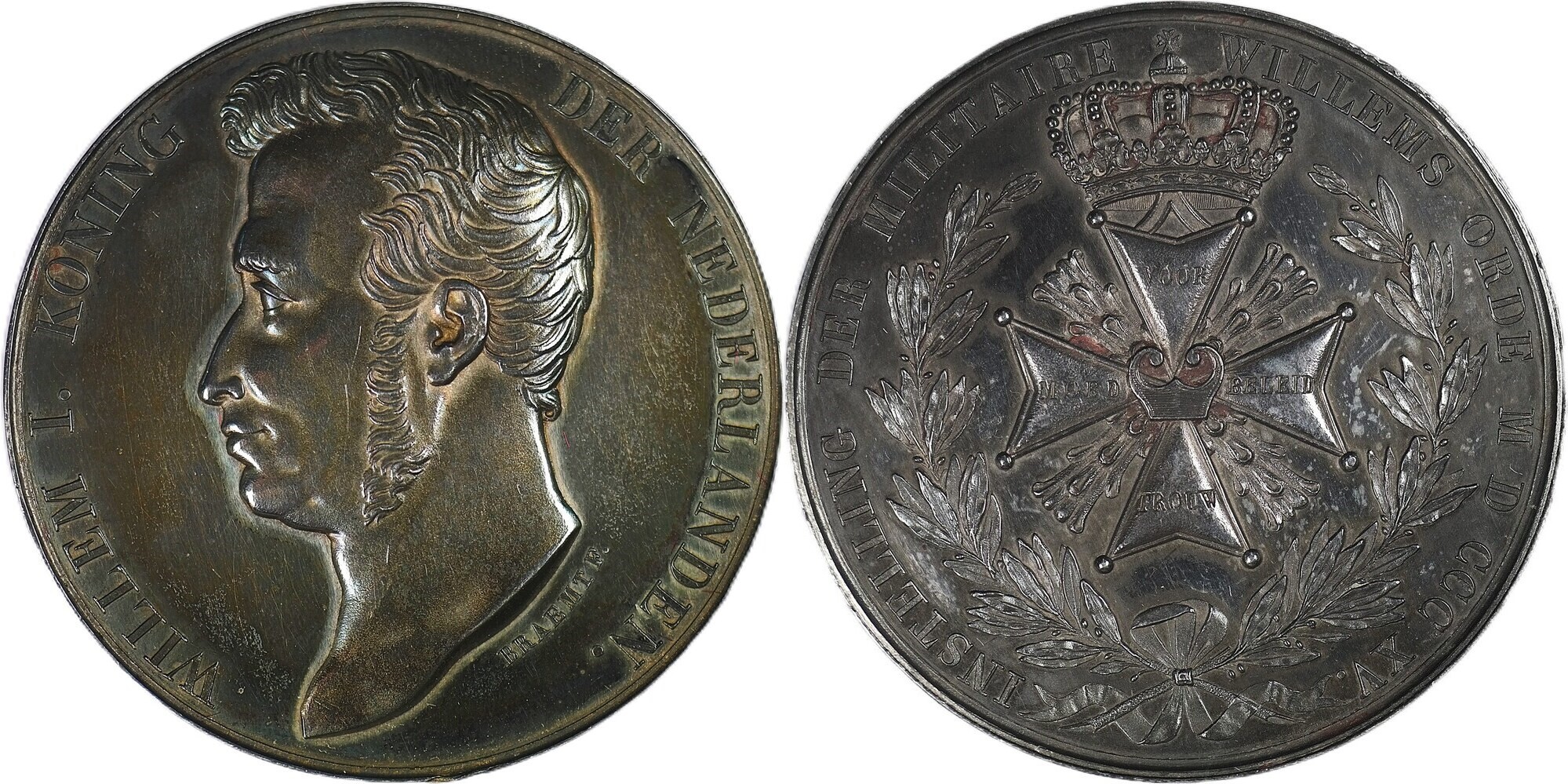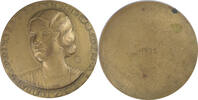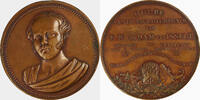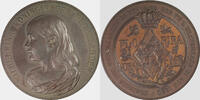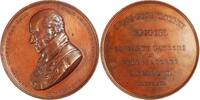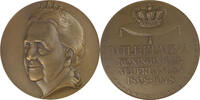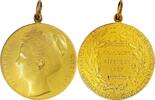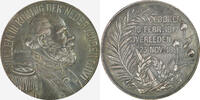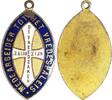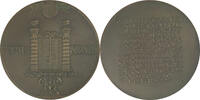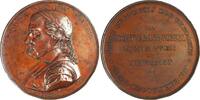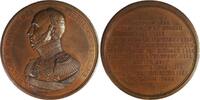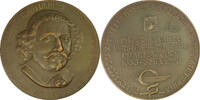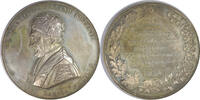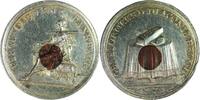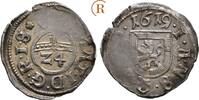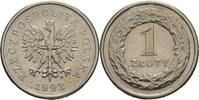MA-ID: 527700340
Bewertungen Joel
Alles bestens, vielen Dank!
Beautiful items! Great shop.
It was a very beautiful medal. I am very happy with everything.
A very nice note. Thanks very much.
Netherlands Silver Medal 1815 Establishment of the Militaire Willems-Orde - by J. Braemt - RRR EF
Joel Numismatics / Demuntenkoning 

11
Seit 11 Jahren bei MA-Shops
755 Bewertungen,
99,5 % Positiv (seit 24 Monaten)
Weltweiter Versand
1850,00 EUR
Differenzbesteuert nach §25a UStG
zzgl. 35,00 EUR Versand ( nach Deutschland )
Lieferzeit: 5 - 8 Tage*
zzgl. 35,00 EUR Versand ( nach Deutschland )
| Bestellhotline +49 (0)2871 2180 383 |
| Zahlungsarten |
| Überweisung |
Establishment of the Militaire Willems-Orde - by J. Braemt - RRR
Obverse:
Bust of King William I to the left. Around: "WILLEM I. KONING DER NEDERLANDEN." Below the bust: "BRAEMT F."
Reverse:
Insignia of the Militaire Willems-Orde, consisting of a cross with a royal crown above, surrounded by laurel and palm branches. On the arms of the cross: "VOOR MOED / BELEID / TROUW." Around: "INSTELLING DER MILITAIRE WILLEMS ORDE M D CCC XV."
In 1815, following two decades of French rule and the turmoil of the Napoleonic Wars, the Kingdom of the Netherlands emerged under King William I. The return of Emperor Napoleon from exile during the Hundred Days posed an immediate threat to the young kingdom. Anticipating a decisive conflict, William I recognized the need to inspire and reward valor among his troops. He thus resolved to establish a military order to honor bravery and reinforce loyalty within his army.
On April 30, 1815, William I issued a royal decree founding the Military Order of William. This became the highest Dutch military decoration, awarded for “conspicuous acts of bravery, leadership, and loyalty.” Unlike traditional orders of knighthood restricted to nobles or high-ranking officers, the order was accessible to soldiers of all ranks. William I was likely inspired by Napoleon’s Légion d’Honneur, which had emphasized merit over birthright.
The timing was fortuitous. Only weeks later, Dutch troops under the Prince of Orange (William’s son, the future King William II) joined the Allied armies in the campaign against Napoleon. The battles of Quatre-Bras (June 16) and Waterloo (June 18) provided the first opportunities to bestow the new decoration. William I awarded over a thousand soldiers and officers for their bravery in the 1815 campaign. The first recipient, the Crown Prince, received the Grand Cross. Allied commanders such as Wellington and Blücher were also honored.
The order’s creation reflected broader military and political developments. At the Congress of Vienna, the northern and southern Netherlands were united under William I to form the Kingdom of the Netherlands. With this decoration, the king sought not only to reward heroism but also to build loyalty and cohesion in his diverse forces. He also created the civil Order of the Netherlands Lion later that year. Still, the Military Order of William remained the highest honor for military service – as it continues to be today.
Koning Willem I – Instelling van de Militaire Willems-Orde, door J. Braemt RRRR
Voorzijde:
Borstbeeld van koning Willem I naar links. Rondom: "WILLEM I. KONING DER NEDERLANDEN." Onder het borstbeeld: "BRAEMT F."
Keerzijde:
Versiersel van de Militaire Willems-Orde, met een kruis bekroond door een koningskroon, omgeven door een krans van laurier en palm. Op de armen van het kruis: "VOOR MOED / BELEID / TROUW." Rondom: "INSTELLING DER MILITAIRE WILLEMS ORDE M D CCC XV."
In 1815, na twee decennia van Franse overheersing en de Napoleontische oorlogen, ontstond onder koning Willem I het nieuwe Koninkrijk der Nederlanden. De terugkeer van keizer Napoleon uit zijn ballingschap begin 1815 – de episode bekend als de Honderd Dagen – vormde een directe militaire dreiging voor dit jonge koninkrijk. Koning Willem I voorzag een beslissende confrontatie en achtte het noodzakelijk de moed van zijn troepen te inspireren en te belonen. Daarom besloot hij tot het instellen van een eigen militaire ridderorde om heldhaftigheid op het slagveld te kunnen erkennen en trouw in de gelederen te versterken.
Op 30 april 1815 vaardigde Willem I een koninklijk besluit uit tot oprichting van de Militaire Willems-Orde. Deze orde werd ingesteld als de hoogste Nederlandse onderscheiding voor dapperheid, bedoeld om militairen (van elke rang) te decoreren voor “uitstekende daden van moed, beleid en trouw”. Anders dan traditionele ridderorden – die vaak voorbehouden waren aan edellieden of hoge officieren – was de Willems-Orde opgezet als een echte verdienste-orde, toegankelijk voor alle rangen in het leger. Bij het creëren van de onderscheiding liet Willem I zich waarschijnlijk inspireren door Napoleons Légion d’Honneur.
De oprichting van de Willems-Orde kwam precies op tijd. Enkele weken later namen Nederlandse troepen onder leiding van de erfprins (Willems zoon, de latere koning Willem II) deel aan de laatste veldtocht tegen Napoleon. De veldslagen bij Quatre-Bras (16 juni) en Waterloo (18 juni) waren de eerste gelegenheden waarbij de nieuwe ridderorde werd uitgereikt. Na Napoleons nederlaag onderscheidde Willem I ruim duizend officieren en manschappen voor hun betoonde moed. De allereerste onderscheiding – het Grootkruis – werd toegekend aan de erfprins van Oranje. Ook geallieerde bevelhebbers zoals de hertog van Wellington en generaal Blücher ontvingen de orde.
De instelling van de Willems-Orde past binnen de bredere militaire en politieke context van 1815. Tijdens het Congres van Wenen waren de zuidelijke en noordelijke Nederlanden samengevoegd tot het Verenigd Koninkrijk der Nederlanden. Willem I wilde met deze orde niet alleen dapperheid belonen, maar ook eenheid en loyaliteit bevorderen in zijn jonge leger. Later dat jaar stichtte hij ook de civiele Orde van de Nederlandse Leeuw. De Militaire Willems-Orde bleef echter het hoogste militaire eerbetoon van het land – en dat is het tot op de dag van vandaag gebleven.
Obverse:
Bust of King William I to the left. Around: "WILLEM I. KONING DER NEDERLANDEN." Below the bust: "BRAEMT F."
Reverse:
Insignia of the Militaire Willems-Orde, consisting of a cross with a royal crown above, surrounded by laurel and palm branches. On the arms of the cross: "VOOR MOED / BELEID / TROUW." Around: "INSTELLING DER MILITAIRE WILLEMS ORDE M D CCC XV."
In 1815, following two decades of French rule and the turmoil of the Napoleonic Wars, the Kingdom of the Netherlands emerged under King William I. The return of Emperor Napoleon from exile during the Hundred Days posed an immediate threat to the young kingdom. Anticipating a decisive conflict, William I recognized the need to inspire and reward valor among his troops. He thus resolved to establish a military order to honor bravery and reinforce loyalty within his army.
On April 30, 1815, William I issued a royal decree founding the Military Order of William. This became the highest Dutch military decoration, awarded for “conspicuous acts of bravery, leadership, and loyalty.” Unlike traditional orders of knighthood restricted to nobles or high-ranking officers, the order was accessible to soldiers of all ranks. William I was likely inspired by Napoleon’s Légion d’Honneur, which had emphasized merit over birthright.
The timing was fortuitous. Only weeks later, Dutch troops under the Prince of Orange (William’s son, the future King William II) joined the Allied armies in the campaign against Napoleon. The battles of Quatre-Bras (June 16) and Waterloo (June 18) provided the first opportunities to bestow the new decoration. William I awarded over a thousand soldiers and officers for their bravery in the 1815 campaign. The first recipient, the Crown Prince, received the Grand Cross. Allied commanders such as Wellington and Blücher were also honored.
The order’s creation reflected broader military and political developments. At the Congress of Vienna, the northern and southern Netherlands were united under William I to form the Kingdom of the Netherlands. With this decoration, the king sought not only to reward heroism but also to build loyalty and cohesion in his diverse forces. He also created the civil Order of the Netherlands Lion later that year. Still, the Military Order of William remained the highest honor for military service – as it continues to be today.
Koning Willem I – Instelling van de Militaire Willems-Orde, door J. Braemt RRRR
Voorzijde:
Borstbeeld van koning Willem I naar links. Rondom: "WILLEM I. KONING DER NEDERLANDEN." Onder het borstbeeld: "BRAEMT F."
Keerzijde:
Versiersel van de Militaire Willems-Orde, met een kruis bekroond door een koningskroon, omgeven door een krans van laurier en palm. Op de armen van het kruis: "VOOR MOED / BELEID / TROUW." Rondom: "INSTELLING DER MILITAIRE WILLEMS ORDE M D CCC XV."
In 1815, na twee decennia van Franse overheersing en de Napoleontische oorlogen, ontstond onder koning Willem I het nieuwe Koninkrijk der Nederlanden. De terugkeer van keizer Napoleon uit zijn ballingschap begin 1815 – de episode bekend als de Honderd Dagen – vormde een directe militaire dreiging voor dit jonge koninkrijk. Koning Willem I voorzag een beslissende confrontatie en achtte het noodzakelijk de moed van zijn troepen te inspireren en te belonen. Daarom besloot hij tot het instellen van een eigen militaire ridderorde om heldhaftigheid op het slagveld te kunnen erkennen en trouw in de gelederen te versterken.
Op 30 april 1815 vaardigde Willem I een koninklijk besluit uit tot oprichting van de Militaire Willems-Orde. Deze orde werd ingesteld als de hoogste Nederlandse onderscheiding voor dapperheid, bedoeld om militairen (van elke rang) te decoreren voor “uitstekende daden van moed, beleid en trouw”. Anders dan traditionele ridderorden – die vaak voorbehouden waren aan edellieden of hoge officieren – was de Willems-Orde opgezet als een echte verdienste-orde, toegankelijk voor alle rangen in het leger. Bij het creëren van de onderscheiding liet Willem I zich waarschijnlijk inspireren door Napoleons Légion d’Honneur.
De oprichting van de Willems-Orde kwam precies op tijd. Enkele weken later namen Nederlandse troepen onder leiding van de erfprins (Willems zoon, de latere koning Willem II) deel aan de laatste veldtocht tegen Napoleon. De veldslagen bij Quatre-Bras (16 juni) en Waterloo (18 juni) waren de eerste gelegenheden waarbij de nieuwe ridderorde werd uitgereikt. Na Napoleons nederlaag onderscheidde Willem I ruim duizend officieren en manschappen voor hun betoonde moed. De allereerste onderscheiding – het Grootkruis – werd toegekend aan de erfprins van Oranje. Ook geallieerde bevelhebbers zoals de hertog van Wellington en generaal Blücher ontvingen de orde.
De instelling van de Willems-Orde past binnen de bredere militaire en politieke context van 1815. Tijdens het Congres van Wenen waren de zuidelijke en noordelijke Nederlanden samengevoegd tot het Verenigd Koninkrijk der Nederlanden. Willem I wilde met deze orde niet alleen dapperheid belonen, maar ook eenheid en loyaliteit bevorderen in zijn jonge leger. Later dat jaar stichtte hij ook de civiele Orde van de Nederlandse Leeuw. De Militaire Willems-Orde bleef echter het hoogste militaire eerbetoon van het land – en dat is het tot op de dag van vandaag gebleven.
Under the 40 euro standard shipment is possible. Take contact after the order for the policy and prices.
Joel Numismatics is a shop with lifelong experience in numismatics. Antique coins, world coins, medals and banknotes are our expertise. You will be able to visit us at several high-end fairs in the Netherlands and Belgium, where you can see and experience our products in person. If there are any queries in any matter u can contact us via email. Have fun in The Joel Numismatics shop
| Versandkosten | ||
|---|---|---|
| bis 600,00 EUR | über 601,00 EUR | |
| Belgien | 12,00 EUR | 30,00 EUR |
| Deutschland | 15,00 EUR | 35,00 EUR |
| Niederlande | 8,50 EUR | 25,00 EUR |
| Europäische Union | 20,00 EUR | 35,00 EUR |
| Welt | 35,00 EUR | 45,00 EUR |
Griechenland ( Lycie) 1 190-167 Av JC Saitta, Val...
Numiscollection
31,50 EUR
Aus Ansicht entfernen
Informationen zum Kauf bei MA-Shops
Bestellungen bei MA-Shops sind jederzeit möglich und werden innerhalb von 2-4 Arbeitstagen verschickt.
Ein über die MA-Shops abgesicherter Kauf findet niemals außerhalb von MA-Shops statt.
Bestellen Sie sicher online mit dem MA-Shops Warenkorb.
Vielen Dank.
Ein über die MA-Shops abgesicherter Kauf findet niemals außerhalb von MA-Shops statt.
Bestellen Sie sicher online mit dem MA-Shops Warenkorb.
Vielen Dank.
|
Verkäufer-Startseite | 0Warenkorb | AGB | Impressum | MA AGB | Datenschutzerklärung | Garantie | MA-Shops Neuzugänge Copyright ® 2001-2025, MA-SHOPS Muenzen All Rights Reserved. Designated trademarks and brands are the property of their respective owners. |
 Münzen beim Fachhändler kaufen
Münzen beim Fachhändler kaufen


